Puff go the spores: this is what happens when you poke earthstar fungi

Have you ever come across something so sensational-looking you just want to poke it?
Well, if you prod this particular mushroom, you’ll get even more than you bargained for – when you do, a dust cloud (billions of spores) is released into the air, as seen in this amazing slow-motion video:
This mushroom is named earthstar fungus. And it’s not hard to see why.
Initially resembling a small egg, the outer layer splits open with each arm folding back, like a star. The egg-like structure remains in the centre, containing the all-important spores needed for reproduction.
And while we know that poking this sphere releases spores, in nature it is raindrops that perform this vital task.
It is its enchanting looks, combined with its inbuilt spore-expelling puffball, that make the earthstar a favourite among fungi enthusiasts.
“It’s always a thrill to stumble across earthstars because of their charismatic form,” says Catherine Marciniak, fungi lover and documentary filmmaker. “They are like little creatures bursting out of the ground, unfolding to reveal themselves… little stars scattered across the forest floor.
“The form is very photogenic, so always a favourite for the fungi hunter.”
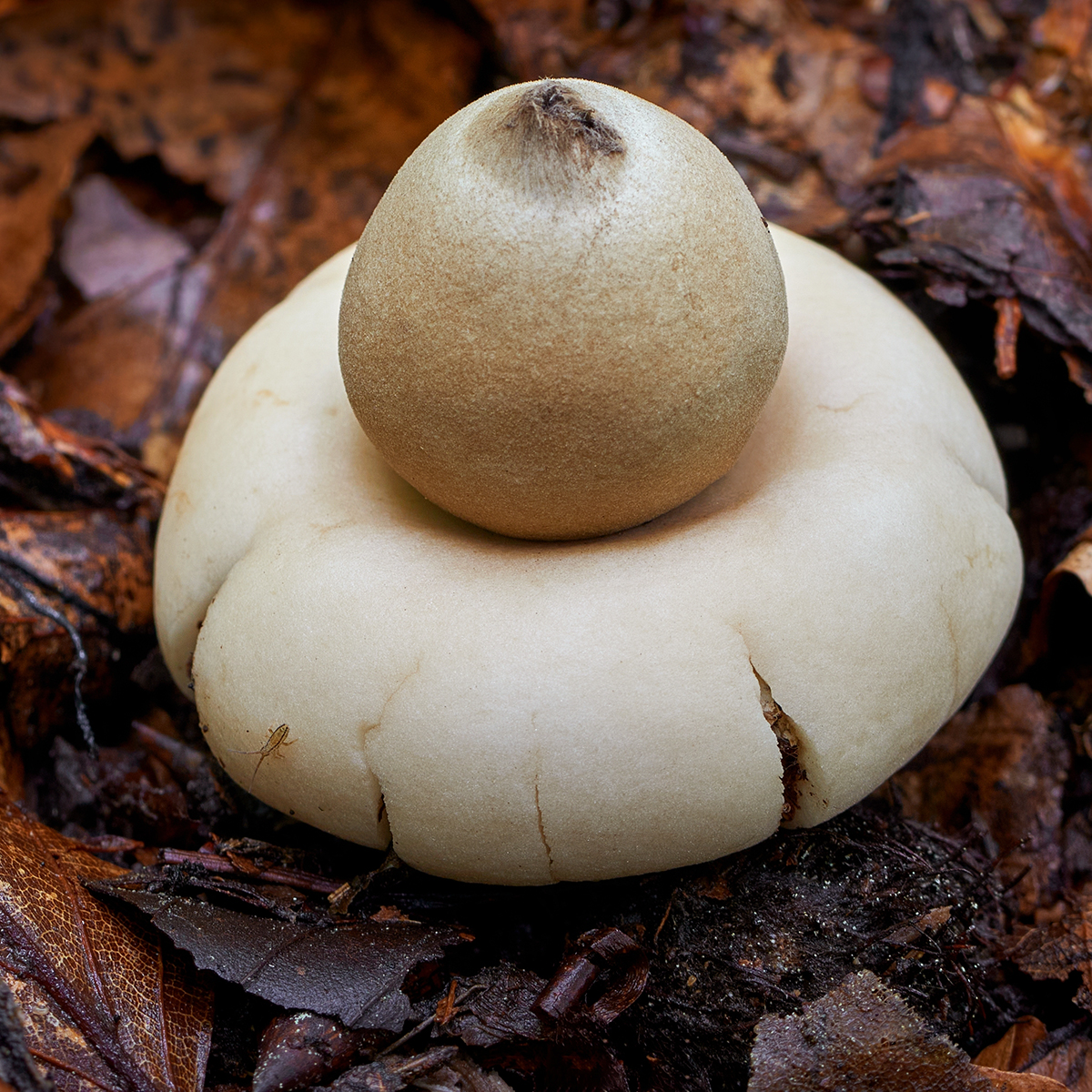
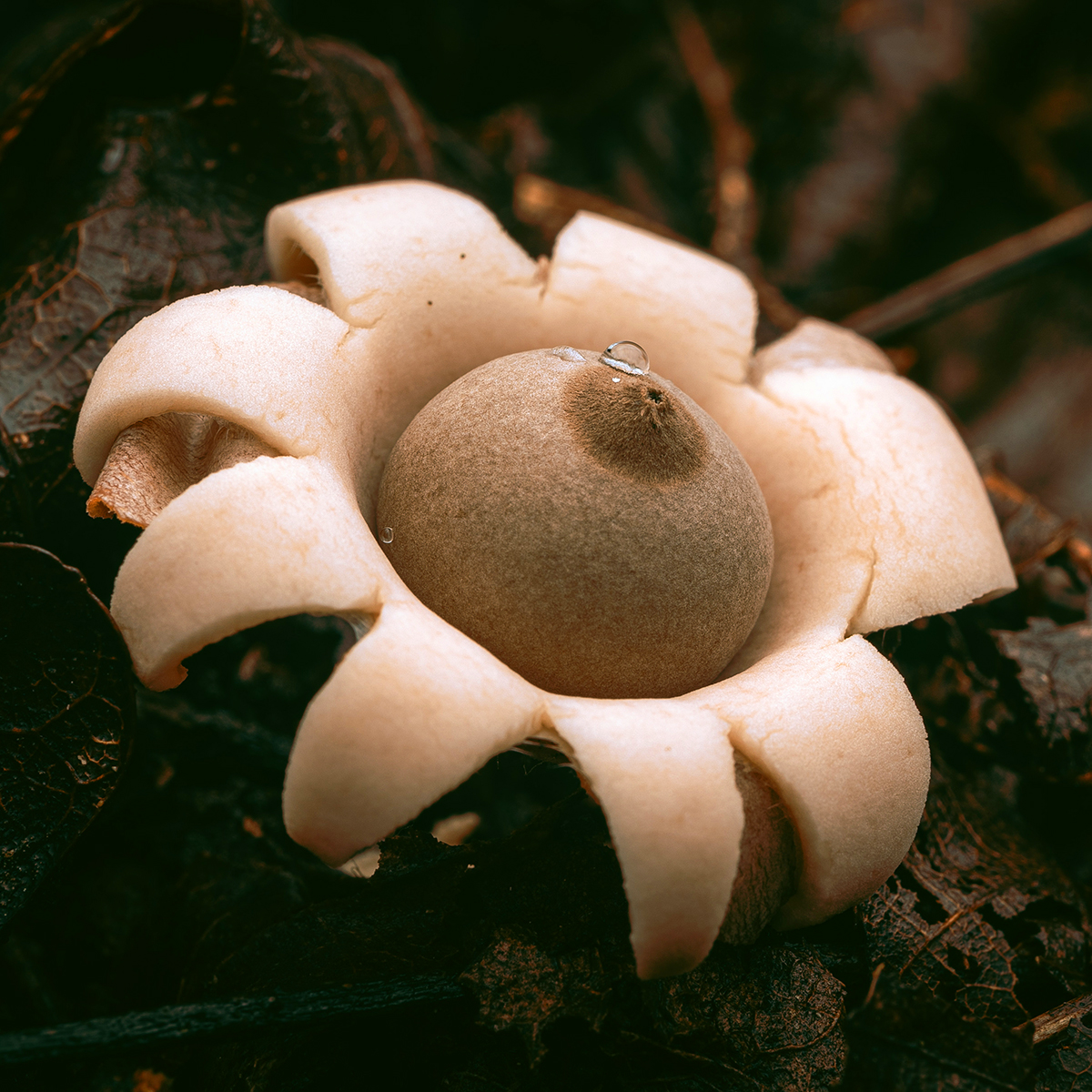
Earthstars are also a favourite of visitors to the Royal Botanic Garden Sydney.
“They’re a common one that people point out to kids and the like because of their unique nature of being able to safely pick them up and squeeze them and look at the spores’ dispersal,” says Dr Brett Summerell, the garden’s Director of Research and Chief Botanist.
They’re also one of his personal favourites.
“They’re awesome, I love them,” he says. “I can’t begin to explain how many photographs of geastrums [earthstars] there are on my phone.”
Found around the globe, the most common earthstar species in Australia, according to Brett, are Geastrum triplex and Geastrum velutinum.
And while you’d expect to find these specimens in prime fungi habitat – along our humid coastlines and in damp rainforests – earthstars are so hardy they’re littered across the country.
“They’ve been dispersed really broadly; anywhere where you have mulch you’re probably very likely to see earthstars there,” Brett says.
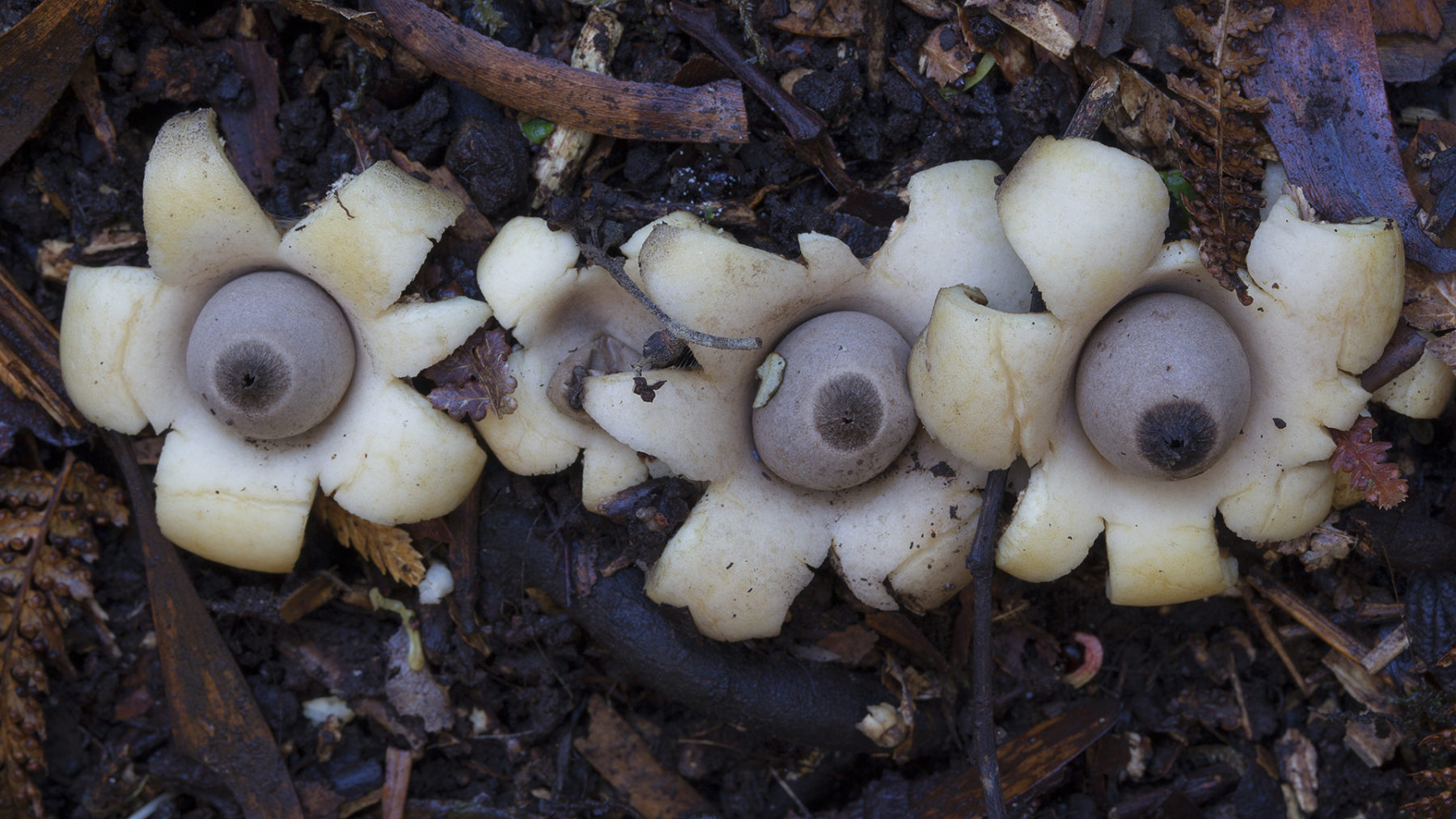
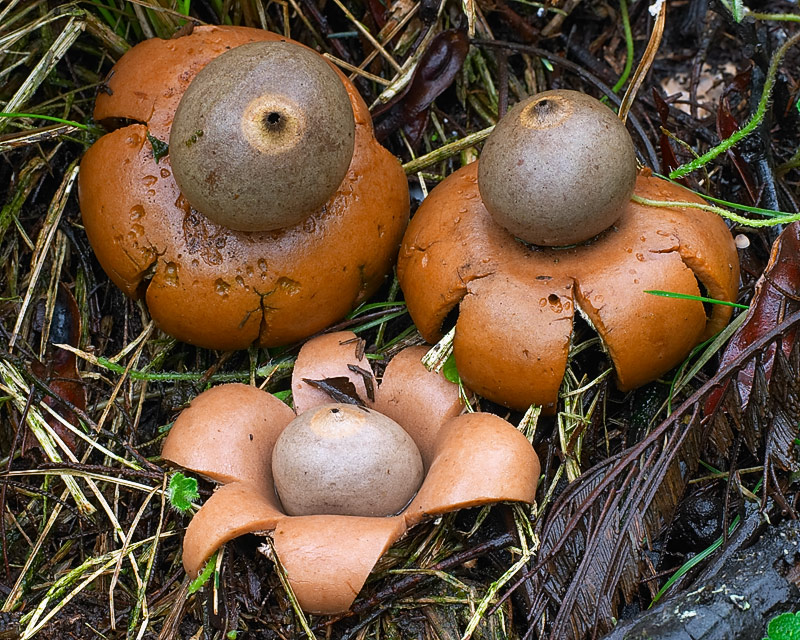
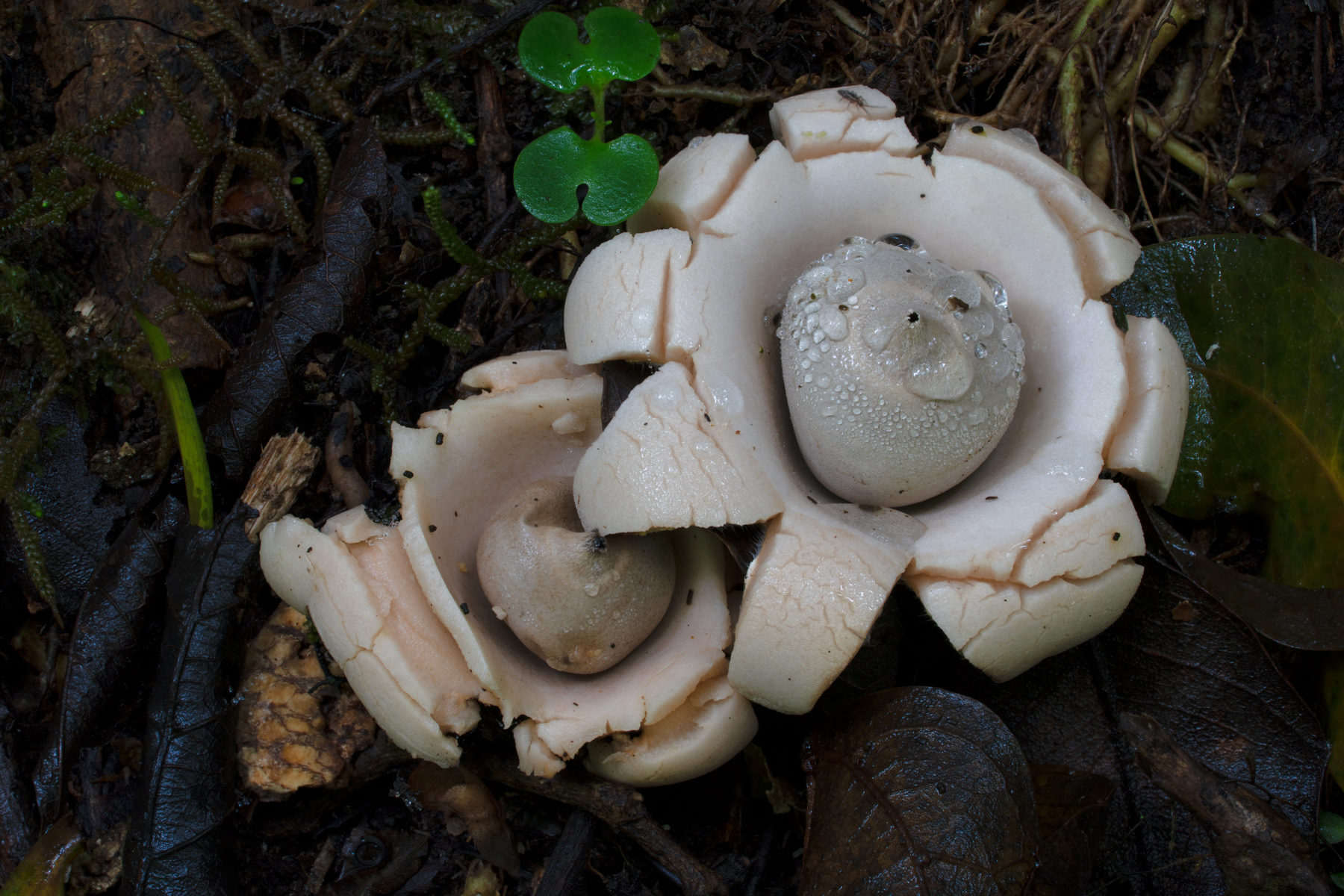
Brett himself even found a cluster under some eucalypt trees in Mungo National Park in south-western New South Wales.
“It was a few years ago right in the middle of the drought,” he says. “Those really were the hardest possible conditions you can imagine.
“So they’ll survive out in that country reasonably well. They’re a little tougher [than other fungi species] so they’re good survivors, even with a relatively small amount of rain, that will often be enough for them to be able to grow.”




